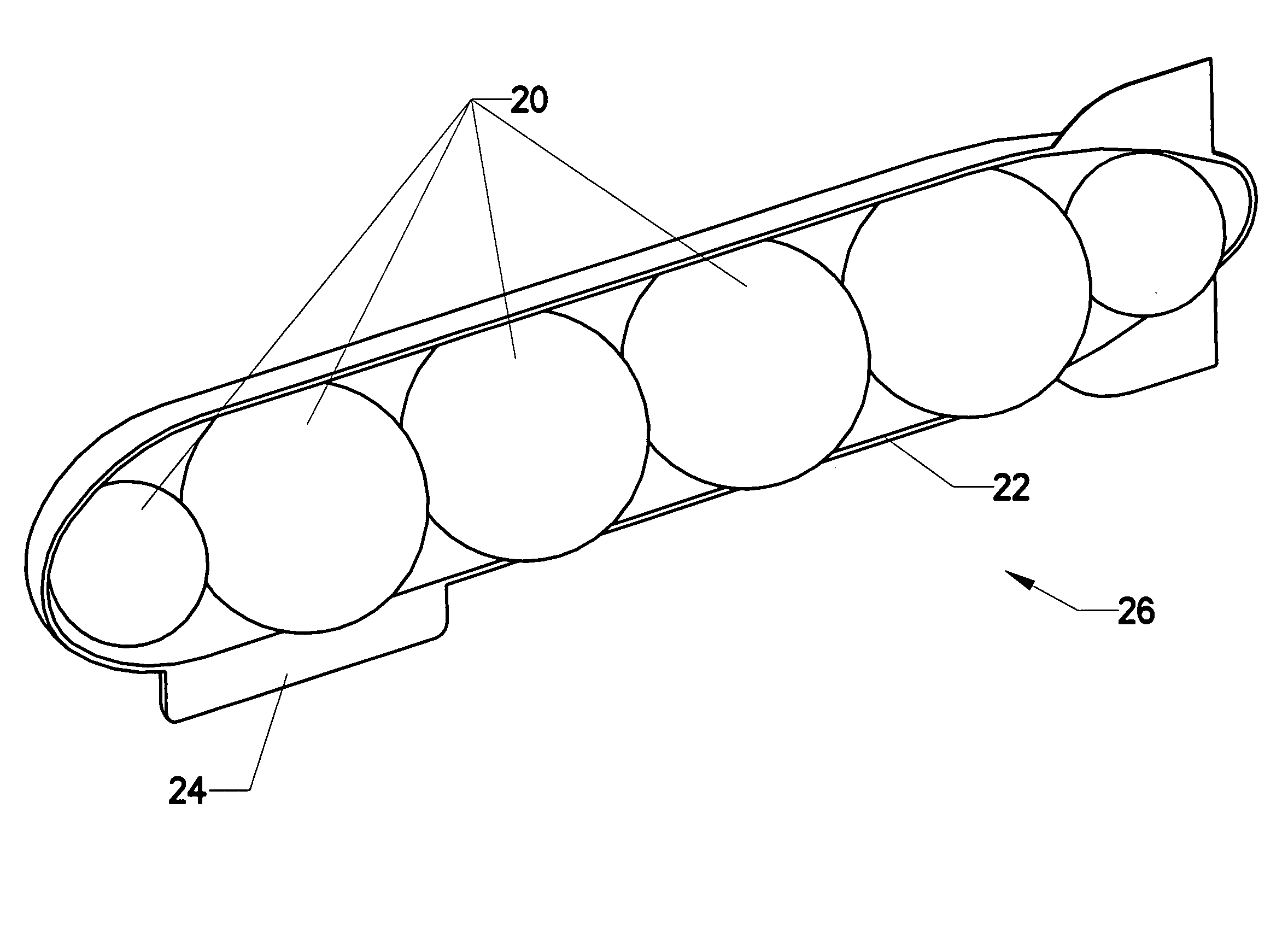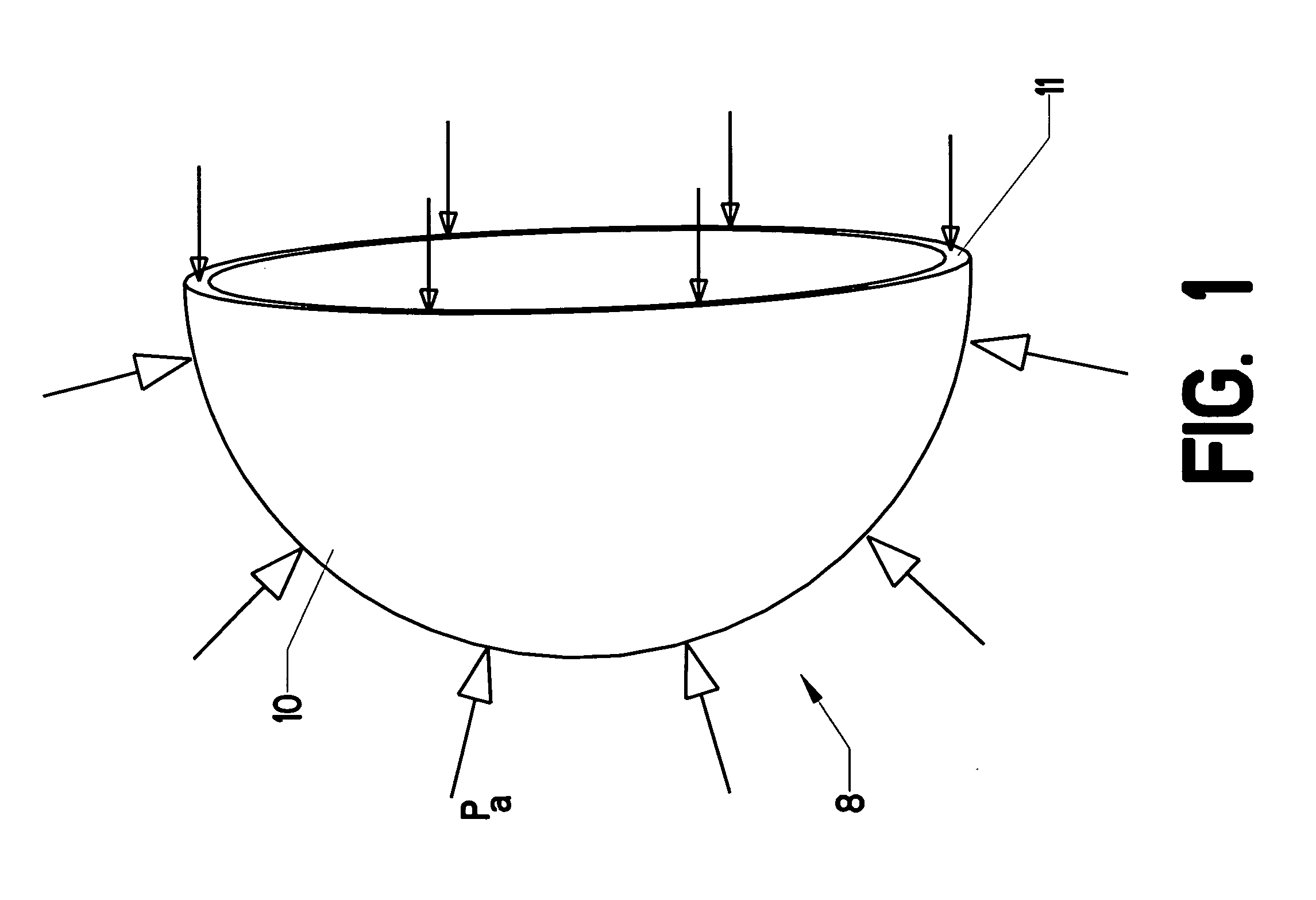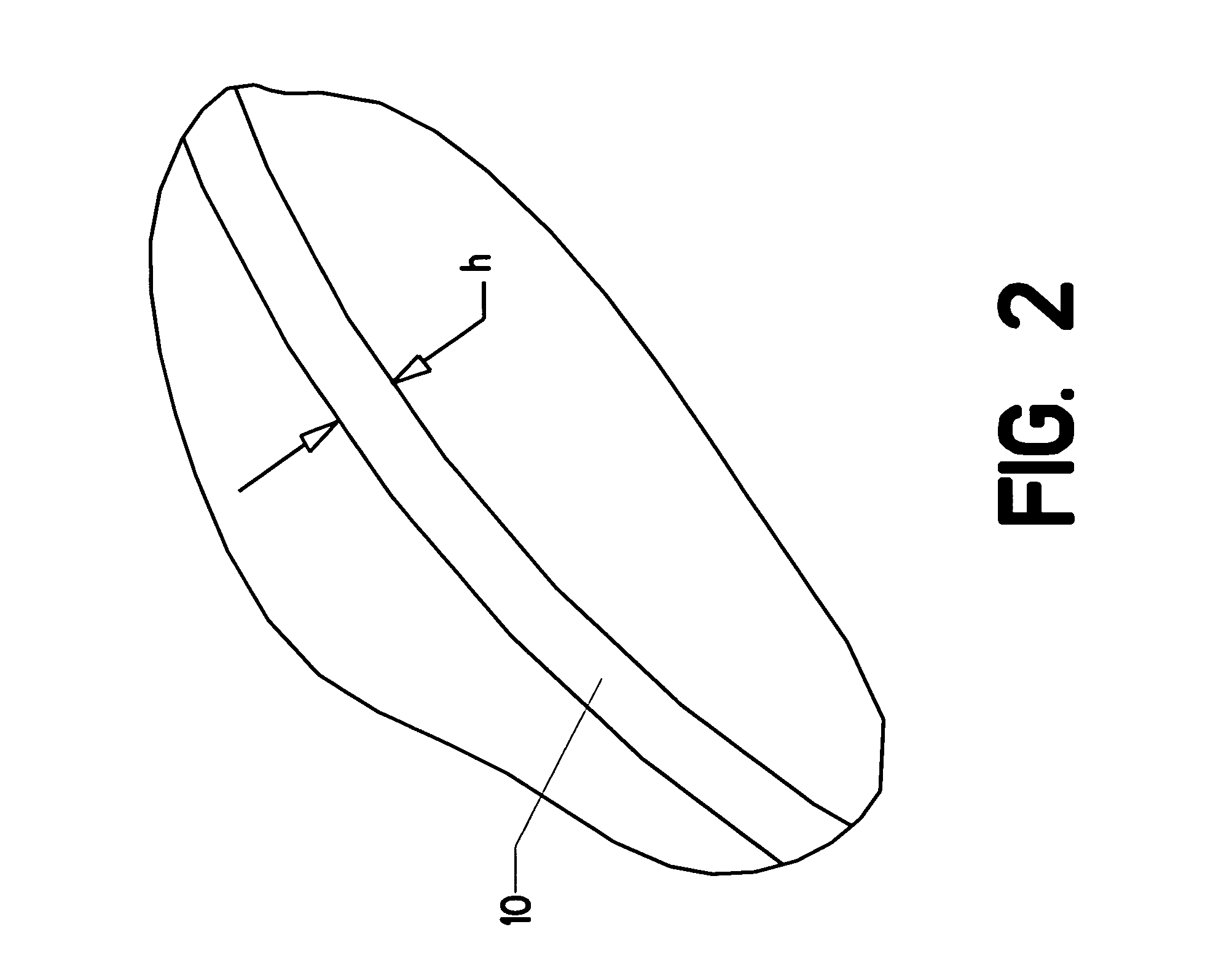Layered shell vacuum balloons
a vacuum balloon and layered shell technology, applied in the field of lighter-than-air structures, can solve the problems of loss of stability, simple evaluation of compressive stress in section 11/b>, loss of stability, etc., and achieve the effect of enhancing the resistance to buckling
- Summary
- Abstract
- Description
- Claims
- Application Information
AI Technical Summary
Benefits of technology
Problems solved by technology
Method used
Image
Examples
Embodiment Construction
[0058]FIG. 3 shows a new type of wall section used in the present invention. Layered shell 12 is formed in the shape of a thin-walled hollow sphere. FIG. 3 shows a small portion of the wall. Inner layer 14 faces the sphere's hollow interior. Outer layer 18 covers the outside of the sphere. Sandwiched between inner layer 14 and outer layer 18 is core layer 16. These three layers are bonded together using adhesives or other known processes. Those skilled in the art will know that adhesives have been successfully used for many years in the creation of thin-walled honeycomb structures.
[0059] Core layer 16 is made of a material having the following properties: [0060] 1. low density; [0061] 2. relatively high compressive strength in the transverse (radial) direction; [0062] 3. relatively high out-of-plane shear strength; [0063] 4. relatively high compressive modulus of elasticity in the transverse (radial) direction; and [0064] 5. relatively high out-of-plane shear modulus.
[0065] One su...
PUM
 Login to View More
Login to View More Abstract
Description
Claims
Application Information
 Login to View More
Login to View More - R&D
- Intellectual Property
- Life Sciences
- Materials
- Tech Scout
- Unparalleled Data Quality
- Higher Quality Content
- 60% Fewer Hallucinations
Browse by: Latest US Patents, China's latest patents, Technical Efficacy Thesaurus, Application Domain, Technology Topic, Popular Technical Reports.
© 2025 PatSnap. All rights reserved.Legal|Privacy policy|Modern Slavery Act Transparency Statement|Sitemap|About US| Contact US: help@patsnap.com



